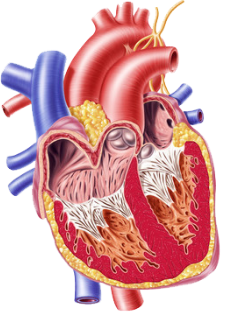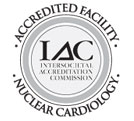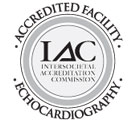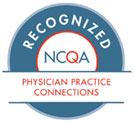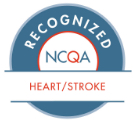Precursors to Heart Disease
People with certain risk factors are more likely to develop cardiovascular disease or have a cardiac event. In these cases, prevention and early diagnosis are the keys to favorable outcomes and long term health.
(Please note that underlined links will allow you to view a video regarding that particular condition)
High Cholesterol and Triglycerides
Elevated levels of LDL cholesterol and triglycerides over time can lead to the development of heart disease or vascular disease. Cholesterol is a molecule found in your cell membranes that plays a role in many processes in the body. Cholesterol is carried through the blood by molecules called LDL and HDL (low density lipoprotein and high density lipoprotein). Triglycerides are fat molecules in the blood. Our cardiologists may order a blood test to measure the triglycerides in your bloodstream as well as the amount of cholesterol carried by LDL molecules and HDL molecules. HDL is your “good cholesterol” and having high HDL is generally healthy. On the other hand, high levels of LDL and/or triglycerides can lead to plaque formation in the arteries and ultimately a heart attack or stroke. Treatment for high LDL cholesterol or triglycerides involves lifestyle changes and sometimes medication.
Hypertension
Hypertension, or high blood pressure, is a very common type of cardiovascular disease. Approximately one in three U.S. adults have high blood pressure. Unfortunately, only about half of these people have their high blood pressure under control. When your blood pressure is taken using a blood pressure cuff, the result is given as two numbers: systolic blood pressure (the “top number”) and diastolic blood pressure (the “bottom number”). Many people do not realize that a normal blood pressure is less than 120/80. A value of more than 130/80 is considered high blood pressure and can be damaging to the heart and blood vessels — leading to heart failure, heart attack, stroke, dementia, and other cardiac complications. The main treatments for hypertension are lifestyle changes and medication.
Chest Pain and Angina
Chest pain may be caused by the heart, lungs, muscle, bone, or digestive issues. Angina is a specific type of chest pain that is caused by insufficient blood supply to the heart, usually due to plaque buildup in the coronary arteries (coronary artery disease). Angina is a symptom that can sometimes be episodic (angina pectoris) or sometimes be a precursor to a heart attack (unstable angina). Angina can be treated with medications, angioplasty, stents, and/or cardiac surgery. New chest pain is an emergency requiring urgent medical attention.
Arterial disease
Age, diet, and lifestyle can all play a role in the arteries becoming blocked with a buildup called plaque. This is called atherosclerosis. When plaque involves the heart arteries, we call this coronary artery disease.
(Please note that underlined links will allow you to view a video regarding that particular condition)
Atherosclerosis
Atherosclerosis is plaque buildup in the arteries, which carry blood from the heart to other organs in the body. When arteries become damaged, fats and cholesterol can build up and cause them to harden, restricting blood traveling to the organs. Blocked arteries can lead to chest pain (angina), heart attack, and stroke. Arterial blockages can affect almost any part of the body. Plaque buildup in the leg arteries can lead to pain while walking, while plaque buildup in the gut arteries can lead to pain after eating and weight loss. Treatment usually involves lifestyle changes, medication, and sometimes invasive procedures. If there is a dangerous amount of plaque buildup, catheterization and stent placement or bypass surgery may be needed. We assess and treat all of these related conditions.
Coronary Artery Disease and Coronary Heart Disease
Coronary artery disease is when blood flow to the heart begins to become blocked due to atherosclerosis, or plaque buildup in the arteries. Coronary heart disease may be treated with a combination of lifestyle changes, medication, and sometimes by opening the blockages with angioplasty, stent placement, and/or coronary bypass surgery.
Heart Attack
A heart attack, also called a myocardial infarction (MI), is when an artery that supplies blood to the heart becomes blocked, generally by plaque. A heart attack can be fatal and it is a medical emergency. Heart attacks can be treated urgently with medications that dissolve the clot as well as catheterization and stent placement. Sometimes, coronary artery bypass surgery may be needed if there are many blockages or if the blockages are in difficult locations.
Arrhythmias
An arrhythmia is a problem with the heart’s rhythm, or when the heartbeat is too fast, too slow, or disordered. There are several different kinds of arrhythmia.
Bradycardia
Bradycardia is when the heart beats too slowly. This condition can be caused by problems with the heart’s electrical impulses, diseases of the sinoatrial node, damage to the heart muscle, or as a side effect of a medication. Some types of bradycardia do not require treatment, but in many cases, a pacemaker is recommended.
Tachycardia
Tachycardia is when the heart beats too fast. Atrial fibrillation, atrial flutter, supraventricular tachycardia, ventricular tachycardia, and ventricular fibrillation are all types of tachycardia.
Supraventricular Tachycardia
Supraventricular tachycardia (SVT) is an arrhythmia that originates in the top part of the heart, usually in the atria (above the ventricular chambers). SVT may be treated with vagal maneuvers (valsalva) during episodes, medication, cardioversion, or sometimes catheter ablation. Learn more about cardioversion and ablation.
Atrial Fibrillation and Atrial Flutter
Atrial fibrillation (afib) and atrial flutter are arrhythmias in which the atria (the heart’s upper chambers) beat in a disordered way, out of synchrony with the ventricles (the heart’s lower chambers). This can cause an irregular, fast heartbeat and can sometimes lead to stroke. Treatment may include anticoagulant medication, medications to slow the heart rate, and/or anti-arrhythmic medications. In some cases, a minimally invasive cardiac procedure like catheter ablation or AV node ablation may be recommended. The patient video section contains several videos with more information on the treatment options for atrial fibrillation.
Long QT Syndrome
Long QT syndrome is a problem with how the heart’s electrical system recharges after sending an electrical signal that generates a heartbeat. Long QT can cause a fast or irregular heartbeat that results in arrhythmia and sometimes even sudden death. This condition can cause apparent fainting or seizures. Once it is diagnosed, long QT syndrome is usually treated with medication, and sometimes with an implantable cardioverter-defibrillator (ICD device).
Valvular Heart Disease
The heart has four valves that control blood flow between the heart’s chambers, the heart and the lungs, and the heart and the rest of the body. Valvular heart disease is when one of these valves becomes damaged and either does not open well or does not close well, causing blood to leak (sometimes referred to as regurgitation, and often detected as a heart murmur). Depending on the specific problem, valvular heart disease may be treated with medication,
balloon dilation, valve replacement, or cardiac surgery. We offer the latest minimally invasive options to address both leaky and blocked valves.
(Please note that underlined links will allow you to view a video regarding that particular condition)
Aortic Stenosis
Aortic stenosis is a kind of valvular heart disease in which the opening of the aortic valve becomes smaller, restricting the flow of blood from the heart into the aorta and out to the rest of the body. This valvular heart disease is usually caused by damage to the valve over time, but can sometimes be congenital. A blocked aortic valve can lead to angina, heart failure, and passing out (syncope). To treat aortic stenosis, valve replacement may be recommended. Our specialists can replace an aortic valve with open heart surgery or using the most modern, catheter-based minimally invasive methods. We work with the patient to determine the optimal approach.
Heart Muscle Conditions
Some conditions of the heart are specifically related to the ability of the heart muscle itself to pump blood.
(Please note that underlined links will allow you to view a video regarding that particular condition)
Cardiomyopathy and Heart Failure
Heart failure means the heart cannot effectively pump blood to the body. In some cases, it means that, while the squeezing function is intact, the heart is unable to relax and refill adequately after each pumping cycle. Cardiomyopathy generally means that the squeezing and pumping function of the heart is compromised. Treatment of heart failure and cardiomyopathy involves identifying the underlying cause of the cardiomyopathy. Common causes of cardiomyopathy include coronary artery disease, poorly controlled hypertension, and excess alcohol intake Medications, lifestyle changes, and sometimes a pacemaker or an implanted cardioverter-defibrillator (ICD) are needed in the treatment of heart failure. In other cases treatment consists of opening blocked coronary arteries. In rare cases when a heart transplant becomes necessary, we work closely with a heart transplant referral center.
Congenital Heart Disease
Congenital heart disease, or a congenital heart defect, is when malformations in the heart, the heart valves, or the blood vessels occur before birth. For example, a heart valve may not develop normally and may be blocked or leaky as a result (in which case we might detect a heart murmur). Similarly, the septum (the wall between the two sides of the heart) may sometimes not develop normally. These conditions can have a variety of manifestations and many lead to heart failure. While some congenital heart disease only requires observation, in other cases, a congenital heart defect may need to be treated with catheterization or surgery.
(Please note that underlined links will allow you to view a video regarding that particular condition)
Wolff-Parkinson-White Syndrome
Wolff-Parkinson-White Syndrome (WPW) is a congenital heart disease arrhythmia that occurs because of an extra electrical signalling path between the upper and lower chambers of the heart that is present at birth. Although WPW doesn’t always require intervention, some cases need to be treated with medication, cardioversion, or ablation.
Other Heart Conditions
Pericarditis
The heart is enveloped in a membrane called the pericardium. Pericarditis occurs when the pericardium becomes inflamed. The condition is usually not chronic and improves on its own or with medication. Rarely, pericarditis can cause fluid buildup around the heart, requiring catheter drainage or surgery.
(Please note that underlined links will allow you to view a video regarding that particular condition)
Peripheral Vascular Disease
Peripheral vascular disease (PVD), also called peripheral arterial disease (PAD), is a type of vascular disease that involves blockages in blood vessels outside the heart. PVD most often occurs in the neck and legs, and it is most commonly caused by atherosclerosis. Treatment may include lifestyle changes, medication, and in some cases angioplasty, stent placement, and/or vascular surgery.
Pulmonary Hypertension
Pulmonary hypertension is high blood pressure in the arteries in the lungs. As a result, the right ventricle — the chamber of the heart that is responsible for pumping blood to the lungs to pick up oxygen — has to work harder and can fail. Pulmonary hypertension can have a number of different causes, and treatment depends on the specific diagnosis and focuses on managing the condition. Pulmonary hypertension is often diagnosed with a pulmonary artery catheterization. Christopher Dibble, MD is the pulmonary hypertension specialist at Cardiology Associates of Schenectady.
Syncope & Vasovagal Episodes
Syncope is fainting because the brain isn’t receiving enough blood, usually due to low blood pressure or an arrhythmia. Vasovagal syncope is when blood pressure drops because of a strong reaction to a physical or emotional trigger, causing fainting. It is important to determine why syncope episodes occur, as they can sometimes be caused by a dangerous underlying heart condition, such as arrhythmia.
Women’s Heart Disease
Women sometimes have less common symptoms of heart disease, making it more difficult to detect. We put a strong emphasis on prevention and awareness with female patients.
